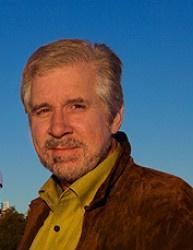Nationality United States Role Astronomer | Name Steven Vogt | |
 | ||
Fields Astronomical instrumentationOptical designHigh-dispersion spectroscopyExoplanet hunting Alma mater University of California, Berkeley (A.B., Physics, 1972, A.B., Astronomy, 1972)University of Texas at Austin (M.S., Astronomy, 1976, Ph.D., Astronomy, 1978) Known for discovery of Gliese 581 g Discovered Gliese 436 b, HD 52265 b, HD 187123 b Similar People Geoffrey Marcy, Debra Fischer, Michel Mayor, David Charbonneau | ||
Lick exoplanet search steven s vogt seti talks
Steven Scott Vogt (born December 20, 1949) is an American astronomer of German descent whose main interest is the search for extrasolar planets.
Contents
He is credited, along with R. Paul Butler, for discovering Gliese 581 g, the first potentially habitable planet outside of the Solar System.
He is a professor of astronomy and astrophysics at the University of California, Santa Cruz, and is known worldwide for designing and building HIRES, a high-resolution optical spectrometer mounted permanently on the W. M. Keck Observatory 10-meter telescope on Mauna Kea, Hawaii. HIRES is an instrument critical to observations and discoveries about the planets, stars, galaxies, and the universe. Vogt also built the Hamilton spectrometer at Lick Observatory (with which most of the first extrasolar planets were discovered). In 1987, earlier in his career, Vogt invented the technique of "Doppler imaging" for mapping the surface features of stars.
Vogt is currently a member of the California-Carnegie Planet Search Team. This team is building a new telescope in the Lick Observatory, the Automated Planet Finder, expected to be the most powerful in the world for detecting extrasolar planets. It will be able to track planets moving at velocities as little as 1 meter per second (the speed of a walking man). Vogt and his team are credited with detecting a majority of the 100 planets now known.
Vogt received his bachelor's degrees in Physics and Astronomy from the University of California, Berkeley, in 1972, his Master of Science degree in Astronomy from UT Austin in 1976, and Ph.D in Astronomy from UT Austin in 1978.
He's been a member of the University of California Observatories (UCO) at Lick Observatory since 1978.
